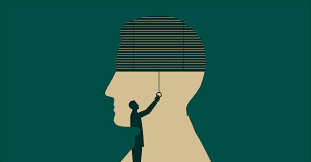Initially, the path of psychologically sick patients was rough. They were subjected to harsh treatment because, until the 1700s, many believed that persons suffering from mental illnesses were possessed by a demon or the devil.
Later in the 16th century, in London, an asylum (Bethlehem Hospital) was created to treat psychologically sick people. The therapy they used to provide was quite brutal, such as tied to the bed, bloodletting, beating, ice bath, and vomiting, (which is also known as spiritual and bodily purification since the individual is purging all impurities from within.)
Sigmund Freud reframed the concept of vomiting in his own terms, describing it as an unconscious purging of all impurities such as disturbing thoughts, socially unacceptable desires, immoral drives, and childhood traumas that are responsible for psychological and neurological disorders.
This gave birth to PSYCHOANALYTIC THERAPY, that revolves around psychoanalytic theory.
ROLE OF THE COUNSELOR:
- Counselors generally urge clients to express whatever comes to mind, particularly childhood traumas, without filtering or placing any hurdles in the way. Counselors, on the other hand, provide a highly comfortable atmosphere that is devoid of judgement in order to enhance the free flow of the conversation.
- The analyst’s job is to assist clients in gaining insight by relishing in and working through unresolved previous experiences that emerge throughout the session. Transference development is promoted in order to assist clients in dealing genuinely with unconscious material.

GOALS:
The aims differ depending on the client, but the major focus is on personal modification.
The objectives are as follows:
- Make the client more aware of their unconscious component of their personality and work through present reactions that may be dysfunctional.
- Assist the client in resolving any unfinished developmental phases. If accomplished clients are able to get unstuck and live more effectively.
- Assist the client in coping with the demands of the society in which they live. According to Freud’s view, unhappy individuals are out of touch with themselves and society. As a result, psychoanalysts concentrate on environmental adjustment, particularly in the areas of work and intimacy.
- The primary goal is to fortify the ego so that perceptions and goals become more realistic.
TECHNIQUES:
- Because Sigmund Freud believed that his patients employed unconscious ideas to prevent anxiety, which could not be brought to consciousness, he developed techniques that are more focused on exploring inner sensations.
- To investigate, Sigmund Freud created “THE COUCH” so that the patient may relax, feel more reliant, and childlike, making it simpler for them to investigate those early stages of childhood and because the therapist can sit behind the patient, the patient cannot see the therapist’s reaction, and the reactions are unaffected.
Sigmund Freud employed several approaches, which are listed below. They can be used individually or collectively. These are:
FREE ASSOCIATION:
- Origin:
This technique goes far beyond and is essentially based on Joseph Breuer’s cathartic procedure that is referred to as: HYPNOSIS (under which the patient attains higher consciousness and breaks through the gateway of subconsciousness, allowing them to relieve their repressed experience that is referred to as: TRAUMATA). Freud simply mold the Breuer’s cathartic procedure and termed it Free association because he believes that while one is under hypnosis, he or she will not be pulled into a profound desire to induce sleep.
- Method:
In free association, the client disowns the traditional method of filtering thoughts by consciously suppressing them and instead says whatever comes to mind, even if it appears illogical or nonsensical. During this procedure, Id is asked to speak, but Ego remains silent.
DREAM ANALYSIS:
- It is the examination of the components contained in a patient’s reported dream. Sigmund Freud referred to dreams as the “Royal Road to Unconsciousness.” He believes that dreams are an attempt to fulfil an unacknowledged sexual urge or a childhood longing.
- The dream is divided into two parts:
- The Manifested content and its occurrences are the manifested content of the dream.
- Latent content had buried symbolic meaning that, if rightly interpreted, would reveal itself and can tell the unconscious conflict.
ANALYSIS OF TRANSFERENCE
- Transference refers to the client’s reaction to the counsellor as though the counsellor were a major figure in the client’s history, most commonly a parent figure.
- The therapist promotes this transference and interprets the client’s negative and positive feelings. This method is highly cathartic in nature since it releases the feeling that the person has been carrying for so long.
ANALYSIS OF RESISTANCE:
- Sometimes the client initially makes progress in the session, but then gradually and steadily declines and may finally cease. This reluctance can manifest itself in a variety of ways, including: skipping appointments, arriving late for sessions, failing to pay fees, persisting in transference, blocking ideas during free association, and refusing to recall dreams or early experiences.
- Counselor analysis of resistance can assist clients to acquire insight into their behavior, but if not done correctly, it can lead to a halt in the therapeutic process.
INTERPRETATION:
Interpretation is the final portion of the session in which the counselor helps the client:
- acquire insight into past, present, and personal events
- can support the analysis of the client’s ideas, feelings, and behaviors.
Sigmund Freud also developed another technique known as Freudian slips. Because researchers have limited methods for assessing unconscious thoughts and internal conflict, they have yet to uncover solid evidence that Freudian slips are a direct outcome of any unconscious drives or impulses you may have.
HENCE IT CANNOT BE CALLED A TECHNIQUE
FREUDIAN SLIPS
- It’s when you intend to say one thing but end up saying something completely else. It usually happens when you’re talking, but it may also happen when you’re typing or writing something down – and even when you’re remembering something.
- According to Freud, unconscious thought fragments seep into conscious activities, prompting you to say something other than what you intended.
- A youngster, for example, who inadvertently calls their instructor “Mom” is just shifting from spending the most of the day with their mother to spending the majority of the day with their teacher.
- Psychoanalysis would be a time-consuming practice requiring several sessions with the psychoanalyst. Because of the nature of defensive mechanisms and the lack of availability of the deterministic forces working in the unconscious, psychoanalysis in its traditional form often involves 2 to 5 sessions per week for several years.
USES, STRENGTHS AND LIMITATIONS OF THE PSYCHOANALYTIC THERAPY
- Psychoanalytic treatment may be used to address a variety of psychological issues, including:
- Anxiety
- Depression
- Emotion struggles or trauma
- Identity problems
- Self-esteem issues
- Self-assertion
- Psychosomatic disorders
- Relationship issues
- Self-destructive behaviour
- Sexual problems
STRENGTH AND CONTRIBUTION:
- The role of sexuality and the unconscious in human behaviour is emphasised. Prior to the development of this idea, sexuality was ignored, and little attention was paid to unconscious power.
- The method provides a theoretical foundation for a variety of diagnostic instruments. Some psychological tests, like the Thematic Apperception Test and Rorschach Ink Blots, are based on this notion.
- The method appears to be effective for people suffering from a wide range of disorders such as hysteria, phobia, and anxiety.
- The approach emphasises the significance of developmental stages.
LIMITATION:
- It is a time-consuming and costly process. If a person is receiving psychoanalysis, he or she will have 3-5 sessions each week throughout the year.
- It does not assist a wide range of clients, particularly the elderly. “Patient benefiting most from psychoanalysis are mainly Middle Ages men and women oppressed by a sense of fruitily and searching meaning for life” ( Bradley& Cox,2001, P.35)
- It is founded on numerous ideas that are difficult to express or understand, such as the id, ego, and superego.
- It is deterministic; for example, Freud attributes certain limitations in women to gender – that is, to being female.
–Apurva Sharma

